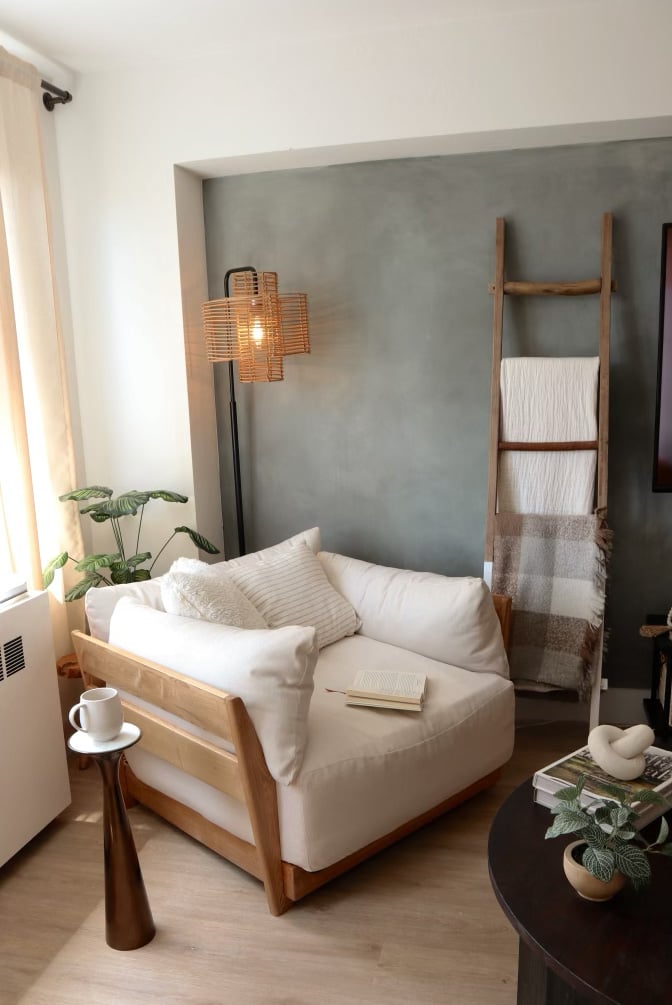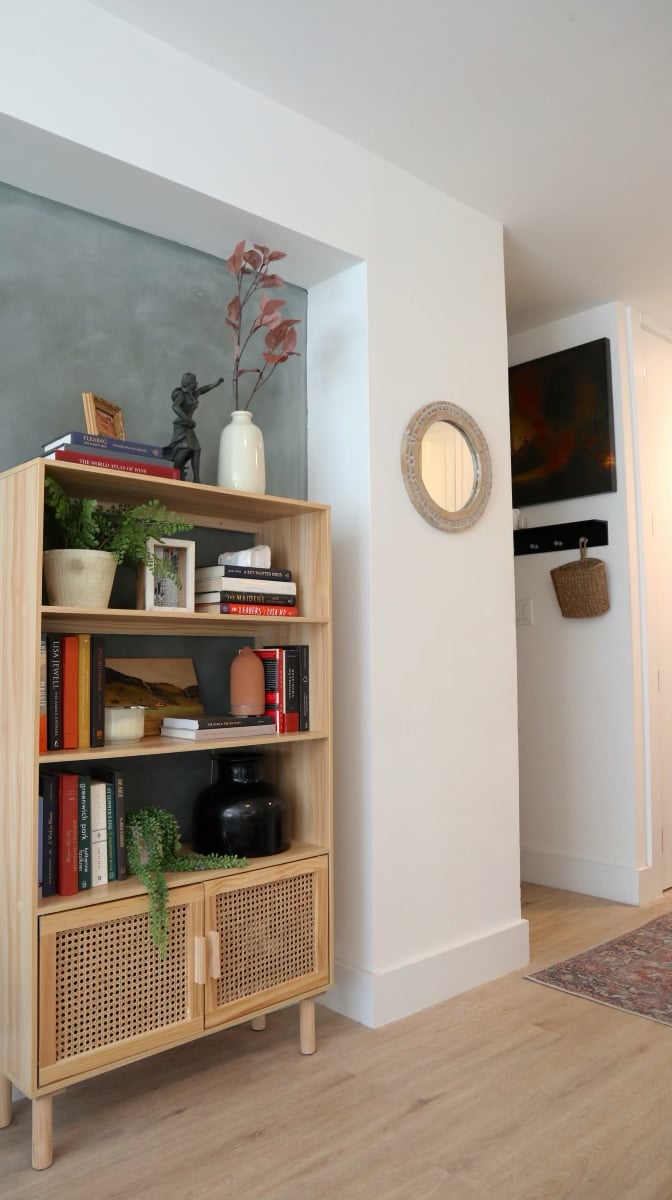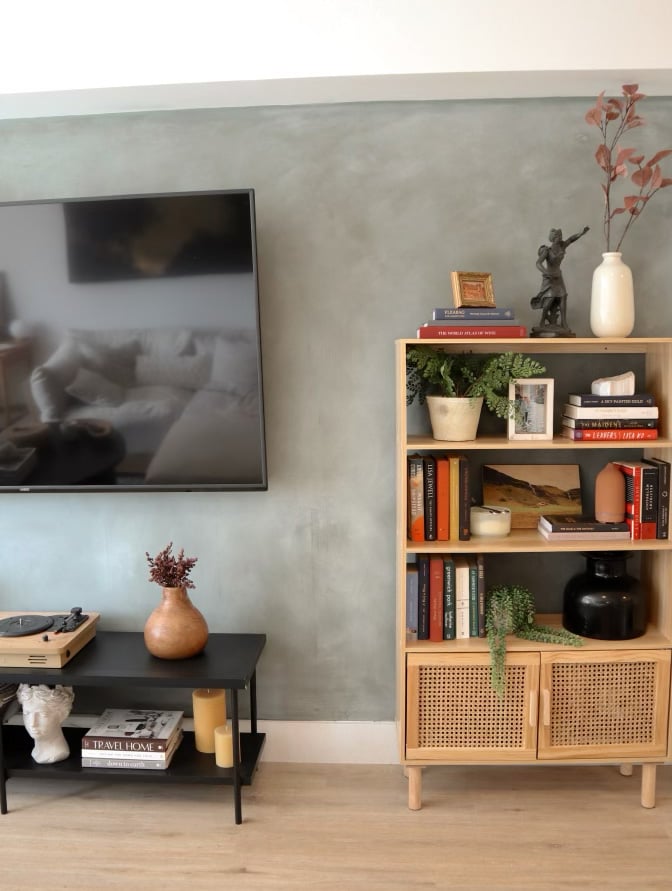Thanks in part to New Mediterranean design and tastemakers like Leanne Ford, limewash is officially trending again. But true to form, this ancient paint technique is anything but new — it dates back to Roman times and was originally used to add texture and longevity to walls centuries ago.
While we love and respect the more traditional limewash application (mess and all), we’re certainly not one to pass up a creative design hack. Enter: DIY limewash. Honed by our very own Havenly designer Levi Austin and social media manager Carlie Rice, our DIY hack uses zero actual limewash, but still looks like the real deal:

“This faux DIY limewash is a great way to add texture and dimension to any space, whether it’s an accent wall or a beautiful structural detail you want to highlight,” says Levi. “Achieving this textured look only requires a dry paintbrush, a lint-free cloth, and your chosen paint colors.”
With just $50, one bottle of wine, and three-ish hours, the two managed to create a gorgeous texture-rich accent wall in Carlie’s New York City apartment. Ahead, find their complete DIY limewash tutorial:
DIY Limewash Supplies

- 2-inch painter’s tape
- 1 drop cloth
- Paint rolling kit
- 2-inch paintbrush (or wider)
- 1 spray bottle filled with water
- 2 lint-free rags
- Your chosen base color (we used Benjamin Moore Army Green in a matte finish)
- Your accent color (we used Benjamin Moore Horizon Gray in a matte finish)
Pro tip: use a darker base with a lighter coat for a chalkier look, or lighter base with a darker coat for a more aged, weathered look.
Quick & Easy 5-Step DIY Limewash

Step 1: Clean and prep the desired wall(s) with painter’s tape and a drop cloth to protect the floor.
Step 2: Paint the surface in your base coat color, and let it dry completely — ideally over night.
Step 3: Using a spray bottle filled with water, lightly dampen the wall. Next, go in with a dry paint brush and apply the accent color using light, painterly brushstrokes. Vary your pressure and technique to create an organic look.
Step 4: Using one damp cloth and one dry cloth, blend out the look until you get your desired saturation and finish. (Pro tip: don’t worry about applying a perfectly even coat — it’s not supposed to look uniform! It should vary in saturation for an organic, natural look).
Step 5: Let the paint dry overnight, remove the painter’s tape, and enjoy your DIY limewash!
Want expert advice on your actual space, straight from an interior designer? Start with our style quiz to work with a design pro one-on-one.

